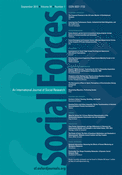
Cities in the less-developed world are frequently characterized by high rates of inmigration, as coupled with a widespread proliferation of slum and squatter areas. As such, a number of observers have suggested that rural-to-urban migrants are disproportionately likely to settle in low-income neighborhoods immediately on their arrival in the city. This paper presents migration data from a Philippine city which do not support this generalization. Overall, migrants are neither heavily segregated in certain districts of the city nor particularly likely to settle in a slum community, with these findings persisting even when the sample was restricted to lower-status, rural—urban migrants. These patterns are chiefly attributable to heavy rates of inmigration among young unmarried persons (especially females), many of whom reside in nonslum neighborhoods as servants, lodgers, or extended relatives.
Links
Resource collections
- UN Habitat - Urban Response Collection
- Urban Response - Urban Crisis Preparedness and Risk Reduction
- Urban Response Collection - Community Engagement and Social Cohesion
- Urban Response Collection - Economic Recovery
- Urban Response Collection - Environment and Climate Change
- Urban Response Collection - Housing, Land and Property
- Urban Response Collection - Urban Crisis Response, Recovery and Reconstruction
- Urban Response Collection - Urban Resilience